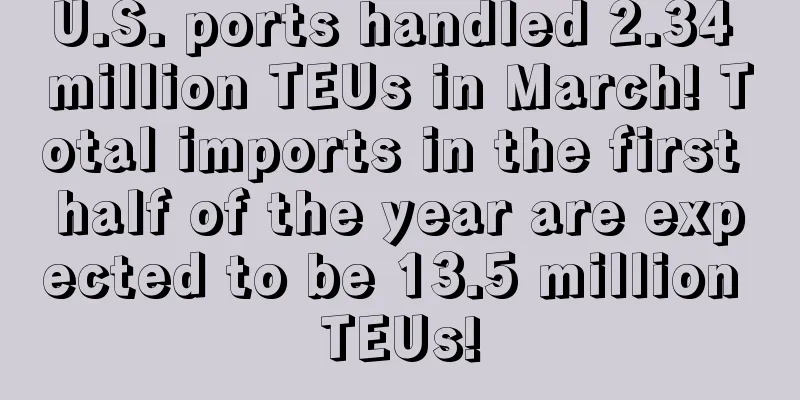Temu changed his face and suffered a setback at home

|
Less than a year after his debut, Temu has already become one of the most popular young stars, and he becomes a hot topic wherever he goes. After the initial success of its US launch site, Temu's expansion was almost smooth, and within a few months, it had set foot in many e-commerce hotspots in Europe and the United States. As of the first half of 2023, Temu has opened a total of 22 sites.
But Temu's ambitions are clearly still expanding. At the beginning of the second half of the year, Temu, which has gradually taken root in the European and American markets, began to turn its attention back to Asia, with Japan as its first base.
As early as the beginning of June , there was news that Temu would open a Japanese point on June 22. However, perhaps the preparation process took longer than expected, and the actual launch time was postponed to early July.
However, Temu, which has always been "flamboyant", has been somewhat timid after returning to East Asia. It has neither continued its millions-dollar promotional momentum in the Super Bowl nor has it made a big fanfare to recruit new players. As rumors have it: Temu's initial cold start in Japan was mainly to test order processes and consumer feedback.
It is learned that when users enter Temu Japan, the visual experience is no different from other European and American sites: simple interface design, a wide range of promotional discounts, and roughly the same product categories. It can be said that Temu is almost a copy of the US site to Japan, with only a new language added and even the product pictures continuing the previous European and American style, without any targeted localization innovation. At first glance, Temu's Japanese site seems to have been launched in a hurry. Although its website is now open, the app has not yet been successfully launched. The website also has many flaws. For example, the reviews of many products are basically machine-translated from Japanese, which is likely to be translated in batches from the US site.
Earlier, there was news that Temu Japan currently has no clear plan to attract foreign investment, and is temporarily selecting products from the existing European and American product library. It is not difficult to infer that Temu currently holds a conservative attitude towards the Japanese market: first test market feedback, and then gradually adjust the best route accordingly.
Why did Temu, which had invaded Japan, become more reserved? This may be because, compared with the European and American foreigners on the other side of the ocean, the delicate and picky Japanese are more like a hard nut to crack.
As a developed country, the biggest characteristics of Japanese consumers are that they pay attention to product quality, emphasize consumption experience and have extremely high brand loyalty. In other words , excellent quality control and product strength are the keys to penetrate the local market.
On the other hand, Temu, which is positioned in the low-end sinking market, has suffered from the common problems of many low-price platforms since its launch: rampant counterfeiting and uneven quality. Although it has initially gained popularity in Europe and the United States, it has not yet established a good consumer reputation, let alone the Japanese market, which attaches great importance to experience and quality.
The low-price route is not very compatible with Japan's mainstream high-end consumer demand. This natural contradiction also makes Temu Japan's website somewhat restrained: compared with the eye-catching 1 cent area on the US website, where a large number of popular products are priced at only a few dollars, the discounts on the Japanese website are relatively insufficient, and products costing thousands of yen are everywhere.
In Europe and the United States, Temu has fought its way out of the encirclement of established giants by reducing its price, and its similar products are priced at only 1/3-1/2 of Amazon’s. However, in Japan, Temu cannot abandon its low-price strategy, but it also wants consumers to not be bound by the inherent label of a low-price platform.
As a result, Temu failed to establish an absolute price barrier in Japan. In fact, the ultimate pursuit of consumer experience does not affect the Japanese's embrace of cheap products. A rather counterintuitive fact: Japan hides a large-scale sinking market - driven by the huge network of 100-yen stores behind it.
The 100-yen stores, which emerged during Japan's economic recession in the last century, are quite similar to the 2-yen stores that once dotted the streets and alleys in China. All products are priced at 100 yen, or about 5 yuan.
These 100-yen stores are all high-quality and have covered the lives of Japanese people with food, household goods, kitchen supplies and other daily necessities. They have established the basic tone of "low price" and the core advantage of "good quality", and have accumulated a solid consumer stickiness over the years.
In other words, the 100-yen store has both what it can do - a high degree of overlap in main product categories and a strong cost-performance advantage; and what it cannot do - deep-rooted brand loyalty.
For the fledgling Temu, its price advantage in the European and American markets does not have the upper hand in front of such offline retail stores. If it cannot quickly seize the market and capture the minds of consumers through low prices, Temu's core competitiveness will be gone.
But Temu is facing even stronger competitors - Amazon, Yahoo and Rakuten are the three major players that dominate the online market.
In Japan, Temu faces a more complex market environment. Online e-commerce is booming, but physical retail still dominates the market; Japan is close to China, but its acceptance of foreign e-commerce culture is still conservative; consumers here are also following the trend of consumption downgrade and flocking to cheap goods, but they still maintain their ultimate pursuit of quality.
The limitation of population size determines the extreme involution of Japanese e-commerce services. Compared with the strategy of simply relying on low prices to break through and expand scale, deepening brand and product strength to increase repurchase rate is the basis for taking root in the local area.
Therefore, for Temu, which is still in a stage of hesitation, how to find compatibility between its inherent low-price route and the tone of the Japanese e-commerce market is a fundamental problem.
Before gaining a firm foothold in Japan, Temu hastily opened its second stop in Asia - South Korea.
As the fifth largest e-commerce market in the world, it is only fitting that Temu includes it in its first strategic destinations for entering Asia. According to a Forbes Korea research report, e-commerce in Korea has maintained a high growth rate of 20.7% over the past 10 years since 2011, and mobile e-commerce has developed particularly rapidly, accounting for 74.8% by 2022.
On the one hand, South Korea's e-commerce supporting infrastructure is well-developed, with powerful hardware capabilities and a safe and convenient mobile payment system, which constitute the cornerstone of the development of online e-commerce; on the other hand, there is the geographical advantage: Shandong, China, and South Korea are across the sea from each other, which is conducive to the establishment of the logistics system of the two countries. In addition, the deep historical roots and similar East Asian cultural environment have also built a bridge for Chinese products to enter neighboring countries.
Such natural advantages undoubtedly provide Temu with the prerequisites to enter the local market by taking advantage of the rapid response of the low-cost supply chain. However, even so, Temu still faces the dilemma of being attacked from all sides in the Korean market.
One is the strong monopoly of the three local giants. Data shows that in terms of user scale, Coupang leads with 27.91 million users, 30% more than the second place 11thStreet, while Gmarket ranks third with 5.08 million users. However, the total number of users of the major businesses under the New World Group is as high as 12 million, and the resulting three-oligopoly pattern continues to strengthen.
▲ The picture comes from Forbes Korea research report With fierce competition from local e-commerce giants and the exclusivity of the local e-commerce market towards foreign "invasive species", it is not easy for Temu, a "little ant", to trip up the elephant.
The second is the long-buried X factor – AliExpress.
Temu is backed by Pinduoduo, while AliExpress is protected by Alibaba. The two parties are fighting fiercely in the domestic e-commerce arena, and with Temu's entry into South Korea, a new battlefield is also about to ignite.
Temu's core competitiveness against Korean local giants lies in its cheap supply chain, while its fellow countryman AliExpress has already taken the initiative and has achieved a high cost-effectiveness advantage by relying on its domestic supply chain foundation.
One of Temu's trump cards is to implement a full-hosting model, which shortens transaction links by coordinating the supply chain and minimizes costs. However, this model has also been used as a reference by AliExpress.
At the end of last year, AliExpress piloted a full-hosting model in the Korean market for sellers with competitive products, and quickly gained high market feedback: in March of this year, AliExpress's order volume surged 50% year-on-year, setting a record high, surpassing Coupang to become the No. 1 shopping app in South Korea in terms of downloads.
It can be seen that there is a high degree of overlap between the two parties from platform models to operational logic. As a latecomer, Temu will inevitably face a tough battle if it wants to break through this line of defense.
After officially landing in Japan and South Korea, many people believe that Temu’s next stop in Asia will be Southeast Asia.
According to MomentumWorks, Temu recently conducted a survey on platform sellers with the theme of "Research on Cross-border E-commerce Platform Sellers in Southeast Asia, Japan and South Korea" , mainly focusing on the sellers' existing e-commerce platforms, main product categories, average daily order volume and GMV scale.
It is reported that the platforms involved in the investigation include Lazada, Shopee, TikTok, Tokopedia, Rakuten, Lotte, Gmarket and Unit808.
From this move, it can be inferred that Temu is preparing to develop the above-mentioned markets. Now that the overall situation in Japan and South Korea has been determined, the move targeting Southeast Asia has not yet been made - unexpectedly, Temu seems to give priority to the layout in the Middle East, and the site is expected to be launched in August.
Southeast Asia is in the developing stage, and its economy is relatively backward. Therefore, low-spending people who are more sensitive to prices form the main consumption structure of the local market. This is undoubtedly highly consistent with Temu's low-price route.
In fact, when the industry was rumored that Pinduoduo would enter the overseas market, the mainstream voice generally speculated that its first stop would be Southeast Asia. But in fact, it started from the United States. Today, Temu has quickly split into 27 sites like a virus, but it seems a little timid when facing the highly compatible blue ocean of Southeast Asia.
According to industry sources, the Temu team has researched markets such as Europe, North America, the Middle East and Latin America since February last year, but ultimately rejected Southeast Asia, where the average customer spending is low and cultural differences between countries are huge.
A big part of the reason is that Temu lacks unique competitive barriers in Southeast Asia.
Southeast Asia is also home to powerful local tyrants. According to the latest research by Singapore-based consulting firm MomentumWorks, Shopee's GMV in Southeast Asia will reach US$47.9 billion in 2022, accounting for nearly half of the local market share, followed by Lazada and Tokopedia. The three companies share most of the Southeast Asian market.
Temu’s specialty – “low price” – has actually already been mastered by the local “natives”, and it also has something that Temu lacks – localization .
The complex humanistic environment in Southeast Asia has set up a natural barrier to foreign cultures. If you want to break through it, you must build a complete set of operating systems such as a local operation team, warehousing and logistics network, and supply chain. Lazada has been on this road for ten years, Shopee has been on this road for seven years, and for the fledgling Temu, there is still a long way to go.
Temu's unique advantage, "full hosting", is now being imitated by giants: Lazada first tried full hosting in the Philippines, and Shopee will also officially announce the full hosting model on July 27.
Before Temu, Amazon and SHEIN also launched attacks, but they all failed due to the complex local market environment.
Southeast Asia, which is enjoying a booming demographic dividend and has low labor costs, has gradually become the hinterland for industrial chain transfer. With the government's policy support for local manufacturing, the leading advantage of the domestic textile and garment industry has been greatly reduced, making it impossible for SHEIN to form a solid price barrier.
Temu may also face a similar dilemma. It must either occupy the high ground of price or differentiate itself. Otherwise, it will probably be lost in the crowd under the shadow of a group of low-price giants.
It is difficult for Temu, which has returned to Asia , to continue the same European and American model to implement dimensionality reduction attacks. The overseas giants with similar genes have changed their formations several times, fighting for the overseas territory.
In this battle among China's overseas platforms, the price war will become more and more intense, and the final outcome will be a battle for the supply chain. |
>>: Another Amazon mechanism overhaul? Sales of a large number of products plummeted!
Recommend
Amazon turns to sellers for help? The platform's trend has changed dramatically
Amazon recently revealed a very funny news. In or...
What is SILULINK? SILULINK Review
SILULINK is a cross-border e-commerce agency brand...
What is GCash? GCash Review
GCash is a small-value payment system under the Ph...
Amazon Black Friday Prime badge comes with high shipping costs? The issue of Black Friday discounts not showing has been fixed.
Anonymous user My C position 01. Amazon Black Fri...
[Rumor-busting] The United States has suspended all customs clearances? Let you understand the truth
Yesterday, a piece of news from a freight forwarde...
Amazon, Walmart and others are competing to enter the beauty and cosmetics market! The beauty and cosmetics market has become a new battlefield for e-commerce giants
It is learned that according to the NPD Group repo...
What is Amazon Map Tracking? Amazon Map Tracking Review
Map Tracking will track when your package arrives,...
Target breaks through supply chain difficulties! Revenue in 2021 exceeds $100 billion!
<span data-shimo-docs="[[20,"获悉,Target公布了2...
What is Enjoy Cross-border E-commerce? Enjoy Cross-border E-commerce Review
Enjoy Cross-border E-commerce is an e-commerce cro...
The back-to-school season in the United States has begun! Target fired the first shot!
<span data-docs-delta="[[20,"获悉,据外媒报道,美国返校...
Grocery category crisis, Amazon stops accepting new orders!
Amazon suspended all orders for non-essential good...
Google Store will add new features to search results! Sellers can mark shipping and return dates!
It is learned that Google recently announced that ...
What is Shenzhen Dianchuang? Shenzhen Dianchuang Review
Shenzhen Dianchuang Intellectual Property Agency C...
Amazon's new regulations impose a "plastic tax", and non-compliance will result in suspension of sales!
Normal, once there is data abnormality, such as s...
Amazon and Etsy are unhappy with sellers for delayed payments! Amazon: We are changing it.
Amazon and Etsy have softened their stance on the ...









